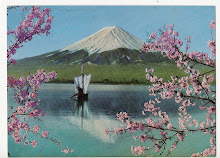ALONG THE STRAND, SEVERAL DECADES AGO
There was an intense air of despondency in the atmosphere of Venice Beach in the early 1960s. It was as if one saw two shadows behind wherever one walked. But this is the dark side of the area that had become a long strip of the Strand that nobody seemed to want. Exactly why Venice Beach became an area that lacked the upper-class charm it once had is a mystery to many and one that will never be known by those who passed on, too old to care but satisfied by the simple life the old apartments provided.
For those folks who spent most of their days looking seaward on the many benches along the Strand, they were happy to be alive and living in a free country where rent was cheap and the weather was ideal, gentle on their elderly and aged bones and flesh.
Many of those who had escaped the death camps of Eastern Europe and the Soviet Union made California their destination of choice. Because most of these refugees had very little income, the Venice area with its rambling, clapboard apartments up and down the alleys on and around the Strand became a haven for WWII expatriates and the displaced. Cheap rent, great weather and a variety of small markets, many that were Kosher, the Venice area was their answer to prayers.
City officials were anxious to raze the area and divide it into parcels that would attract developers, but such an act would displace thousands of the elderly. Consequently, much to the chagrin of the realtors with deep pockets, Venice Beach survived long enough to let most of the elderly live their last days where they wanted.
This was one part of the Venice I saw when I arrived in early 1960. But there was a brighter side, a more joyful side to the Venice of 1960s.
In many respects, it was the dark side of Venice that made it also bright for another and younger segment of the population. Venice Beach was attracting a steady stream of artists, writers, musicians, beach bums who would become lifelong surfers and young people seeking an new and different lifestyle in the California sunshine, a place where the markets stayed open all night,a place where there were cool people, cool stuff, cool love and romance, and then there were the beatniks and the espresso shops. Venice Beach was an open community with a place for everyone, a haven for freedom of expression, a place for artists to paint time and again, a place with people who were poets one would never forget.
****Moved***** to WordPress: phillipsblogs.blog
2 months ago













